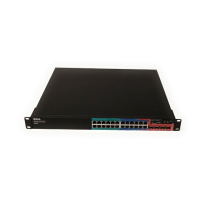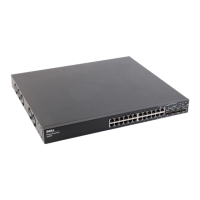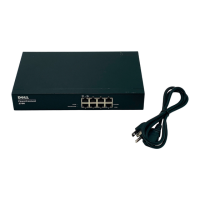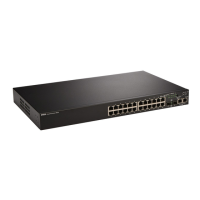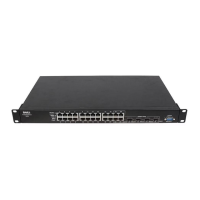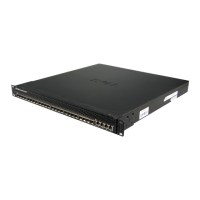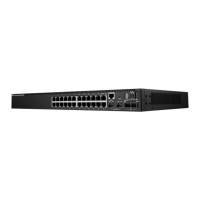1222 Sflow Commands
sflow destination
Use the sflow destination command to configure the sFlow collector
parameters (owner string, receiver timeout, maxdatagram, ip address and
port). Use the “no” form of this command to set receiver parameters to the
default or remove a receiver.
Syntax
sflow
rcvr_index
destination {
ip-address
[
port
] | maxdatagram
size
| owner
"owner_string"
timeout
rcvr_timeout
}
no sflow receiver
rcvr_index
destination {
ip-address
| maxdatagram | owner
}
•
rcvr_index
—The index of this sFlow Receiver (Range: 1–8).
•
ip-address
—The sFlow receiver IP address. If set to 0.0.0.0, no sFlow
datagrams will be sent.
•
size
—The maximum number of data bytes that can be sent in a single
sample datagram. The management entity should set this value to avoid
fragmentation of the sFlow datagrams. (Range: 200–9116 bytes).
•
owner_string
—The identity string for the receiver, the entity making use
of this sFlowRcvrTable entry. The default is an empty string. The empty
string indicates that the entry is currently unclaimed and the receiver
configuration is reset to the default values. An entity wishing to claim an
sFlowRcvrTable entry must ensure that the entry is unclaimed before
trying to claim it. The entry is claimed by setting the owner string to a
non-null value. The entry must be claimed before assigning a receiver to a
sampler or poller. (Range: 1–127 characters).
•
rcvr_timeout
—The time, in seconds, remaining before the sampler or
poller is released and stops sending samples to the receiver. A
management entity wanting to maintain control of the sampler is
responsible for setting a new value before the old one expires. (Range:
0–4294967295 seconds).
•
port
—The destination Layer4 UDP port for sFlow datagrams. (Range:
1–65535).
Default Configuration
No receivers are configured by default.

